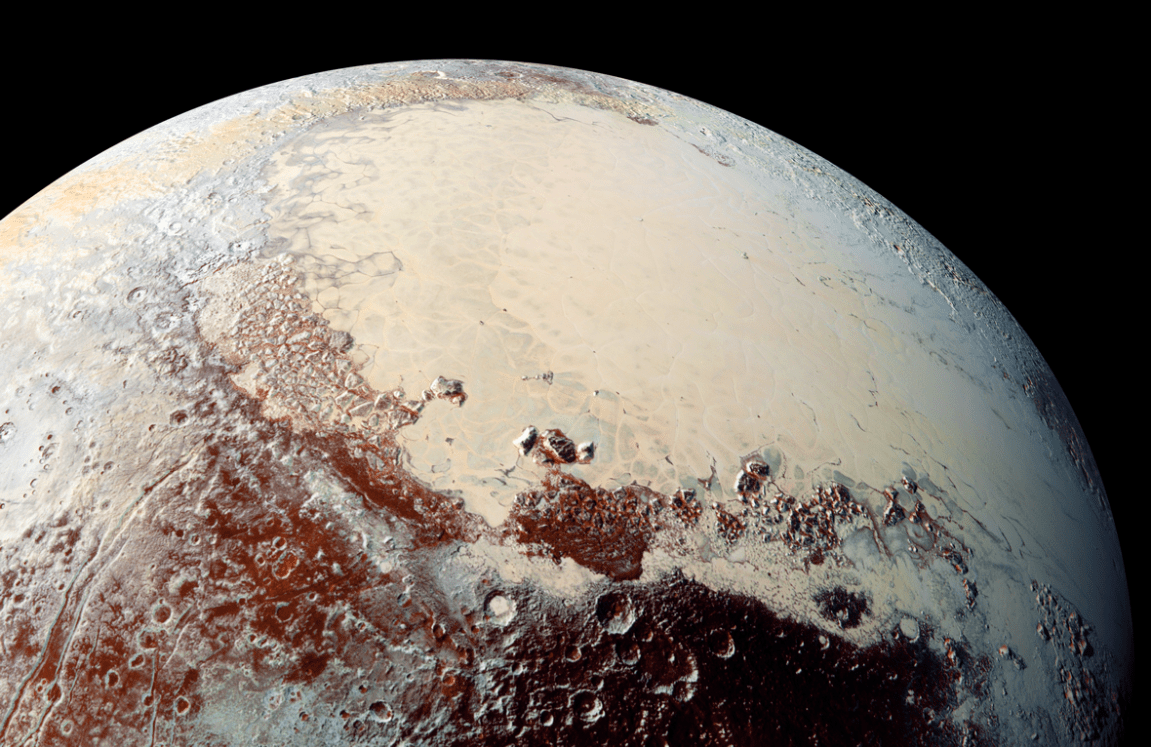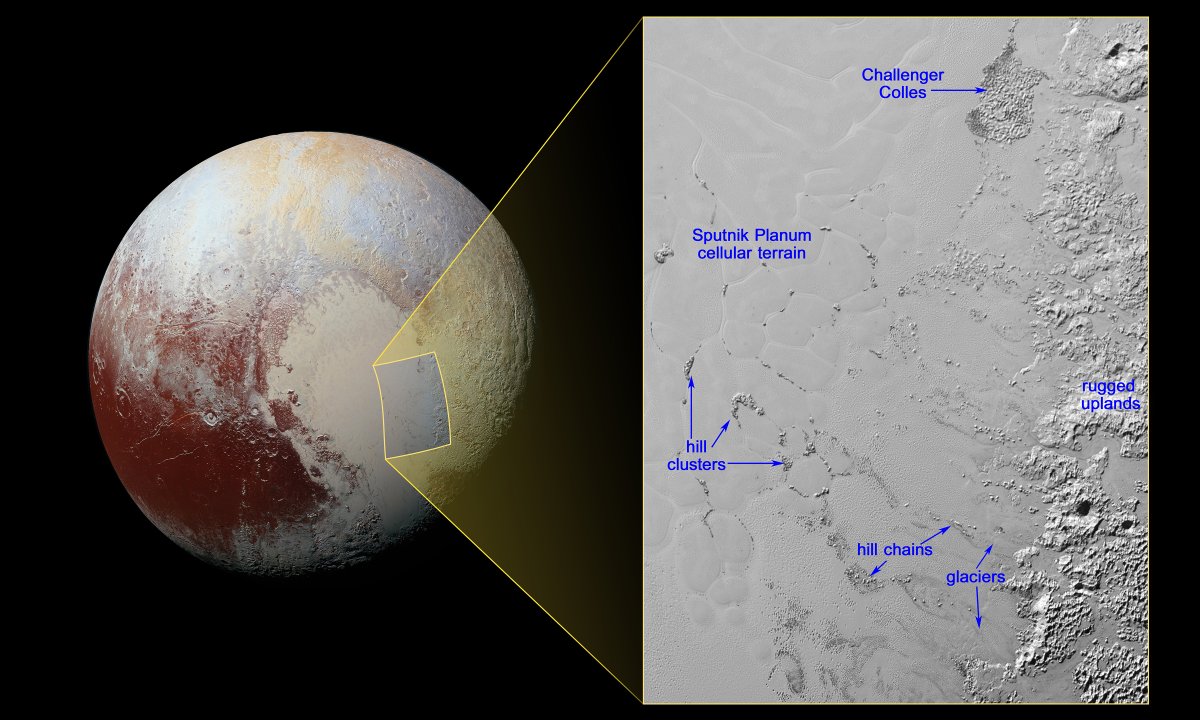
Water Ice and Nitrogen Ice
NASA’s New Horizons mission keeps astonishing us with new images and new revelations about the mysterious, demoted dwarf planet, Pluto.
The most recent discovery is this little gem: Pluto has hills and small mountains that literally float across its surface. It’s weird and unearthly, but we’re dealing, after all, with a very alien world on the outskirts of the Solar System.
And things are bound to get even weirder.
The newly discovered hills are mostly small, typically a few kilometers across, and were discovered in the immense frozen ocean of the so-called “Sputnik Planum,” which represents the western lobe of the famous heart-shaped Tombaugh Regio, the most prominent feature on Pluto.
It seems these hills are composed of familiar water ice (so they really are icebergs, just like their terrestrial counterparts); since water ice is less dense than nitrogen ice, these hills are literally bobbing in a vast glacier or frozen ocean of nitrogen.
The ice-hills themselves appear to be fragments of the water-ice uplands that ring the smooth Sputnik Planum, and they have apparently broken off and been swept away by the nitrogen glaciers, just like any iceberg in Earth’s Arctic or Antarctic oceans.

The Cellular Terrain
Once afloat in the midst of Sputnik Planum, the ice-hills fall under the sway of the strange forces at work in the vast nitrogen ice glacier. The so-called “cellular terrain” in the central regions of the glacier result from the slow, aeon-spanning convective forces of the nitrogen ice; the ice-hills are caught up in these convective cells, and pushed to their edges, forming small clusters or chains in some cases up to 20 kilometers (12 miles) long.
An unusually large concentration of these “icebergs” was found in a feature called Challenger Colles (“the Challenger hills,” named after the ill-fated Space Shuttle). The feature (seen at the top of the image), with dimensions of 60 by 35 kilometers (37 by 22 miles), seems to represent a kind of “reef” or shallows where a large number of the ice-hills accumulated and “ran aground.”
The discovery of icebergs on Pluto seems to provide a familiar reference-point and link to the geology, hydrology, and other forces at work on Earth; but, once we look into things a little more closely, we understand just how truly alien this distant member of our Solar System really is.
So far, we’ve found Pluto to have nitrogen ice glaciers, ice volcanoes, floating mountains, and a layered atmosphere full of strange hydrocarbon molecules. Now if we could just find evidence of a strange, thoroughly non-terrestrial life…